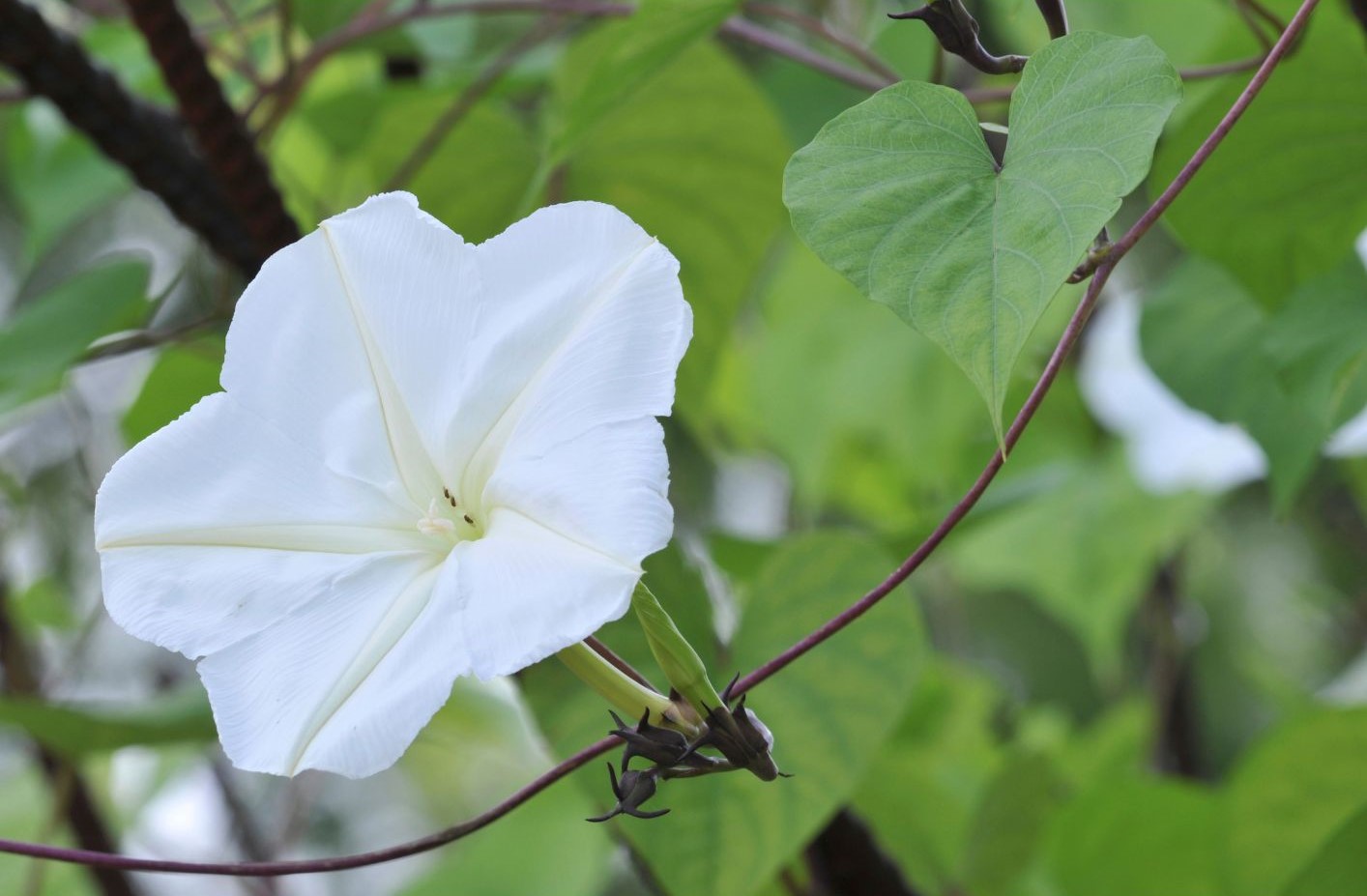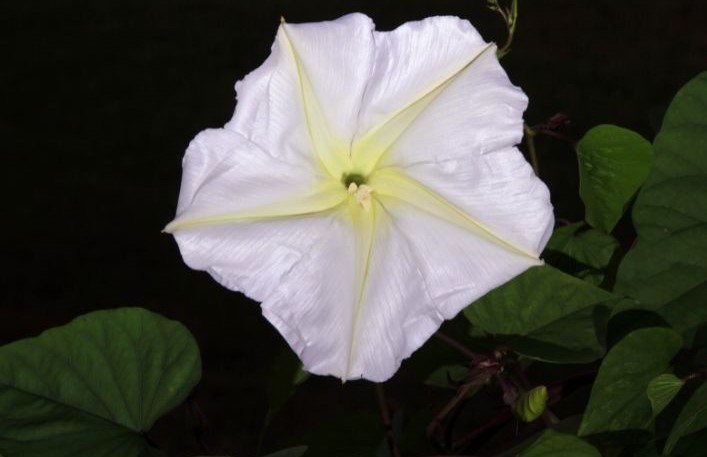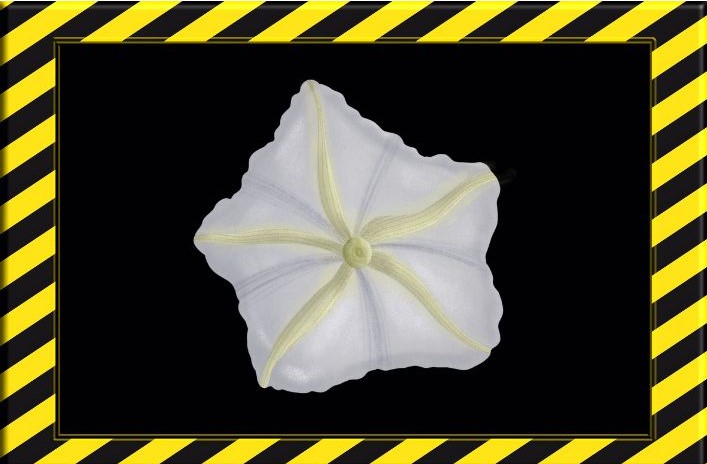What is a Moonflower?
Moonflowers are a beautiful and unique plant that only blooms at night. They are known for their large, fragrant blooms and their ability to attract deer away from gardens. Learn more about moonflowers and how to grow them in this blog post.

What is a Moonflower?

Moonflower is a beautiful and fragrant vine that blooms at night. It is a tender perennial, but it is often grown as an annual in cooler climates. Moonflowers have large, heart-shaped leaves and trumpet-shaped flowers that are typically white. The flowers open in the evening and stay open all night, giving off a sweet fragrance. Moonflowers can grow up to 20 feet long, so they need plenty of space to climb. They are best planted in the spring after the danger of frost has passed.
Are Moonflowers Poisonous?

The seeds of moonflowers are poisonous, so it is important to keep them away from children and pets. The rest of the plant is not poisonous, but it is still not recommended to ingest it. Ingesting the seeds causes agitation, confusion and hallucinations. Heart rate and blood pressure can climb, mouths can become dry, skin turns dry, hot and flushed, and vision is blurred. In severe cases, the seeds can cause seizures and comas.
How to Plant Moonflower Seeds?

To plant moonflower seeds, start them indoors about 4-6 weeks before your last frost date. Soak the seeds overnight in warm water or slightly nick them with a file to break their hard coating. Plant the seeds about ¼ inch deep in a seed-starting mix. Use small biodegradable peat pots so that you can plant the seedlings directly in the garden without disturbing their roots. Place the pots in a warm spot that gets bright, indirect light. Keep the soil lightly moist until the seedlings emerge.
Once the seedlings have emerged, you can begin acclimating them to direct sunlight. Start by placing them outdoors for a few hours each day and gradually increase the amount of time they spend outside. After about a week, the seedlings will be ready to be planted outdoors.
You may also consider using seed trays to increase your chances to succeed germinating the seeds.
What is a seed tray used for?
Seed trays are used to start plants from seed until they germinate. They are typically made of plastic and have a number of individual cells, each of which is filled with soil. This allows you to plant multiple seeds in the same tray, which saves space and makes it easier to care for the seedlings.
Large seed trays can hold dozens of plants, depending on the spacing or cell size. This makes them ideal for starting large quantities of seeds, such as when you are planning to plant a moonflower garden.
Seed trays make it easier to move and care for lots of seedlings at the same time. You can simply lift the tray and transport it to a new location, or you can water all of the seedlings at once by watering the tray.
Seed trays with individual cells make transplanting easy. When the seedlings are large enough to transplant, you can simply remove them from their individual cells and plant them in their permanent location. This helps to minimize transplant shock and ensures that the seedlings have a good chance of survival.
Of course, seed trays are not magic. You still need to keep the soil wet enough and maintain the ideal temperature to ensure good seed germination rates in a reasonable time frame. However, seed trays can make the process of starting plants from seed much easier and more efficient.
Here are some additional tips for planting moonflower seeds:
How to Grow a Moonflower?

Moonflowers are a type of vine that grows quickly and can reach up to 20 feet (6 m.) in height. They do not need much ground space, as they will climb up any support that is provided. If you do not provide a support, the vines will twin around anything within their reach. You can pinch back the growing vines at the top to encourage flowering downward.
When selecting a trellis, there are key factors to consider:
Here are some additional tips for selecting a trellis:
Moonflower plants are winter-hardy perennials in zones 10-11, but they can be grown as annuals in cooler climates. They grow easily from seed when planted in somewhat fertile soil. In colder climates, seeds can be started indoors 6-8 weeks before the last frost. Plant moonflowers outside when outdoor temperatures are consistently 60-70 degrees Fahrenheit (15-20 degrees Celsius).
Moonflower vines can be grown in large containers or planted in the ground. They can also be started from root division of existing plants. In southern zones, mulch the roots of moonflowers in the winter. In colder areas, dig up the plants and store them in a cool, dry place for the winter.
Moonflowers are adaptable to different light conditions, but more sun will result in more blooms.
We hope you enjoyed this blog post about moonflowers. If you are interested in buying houseplants, succulents, cacti, flower arrangements, we recommend checking out our online shop here or visiting our store in Gilroy. We are Rosies & Posies Florist, and we serve Santa Clara County.

